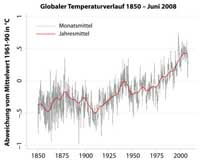| . |  |
. |
El Segundo CA (SPX) Dec 21, 2009 Boeing reports that GOES-14 (formerly GOES-O), the second satellite in a series of Geostationary Operational Environmental Satellites built by Boeing for NASA and the National Oceanic and Atmospheric Administration (NOAA), has completed on-orbit testing and been accepted into service. NOAA will use GOES-14 to accurately predict storms and monitor weather conditions across approximately 60 percent of the planet, including the United States. "Since the launch of our first GOES weather satellite in 1980, Boeing has provided a combined 35 years of on-orbit service to meteorologists who rely on the GOES satellites for crucial weather information," said Craig Cooning, vice president and general manager of Boeing Space and Intelligence Systems. "The acceptance of GOES-14 is another example of our collaboration with NASA and NOAA to ensure that we continue to deliver the advanced capabilities that they require." Boeing and NASA conducted approximately five months of on-orbit testing on GOES-14 from the NOAA Satellite Operations Control Center in Suitland, Md., after the satellite's June 27 launch from Cape Canaveral Air Force Station, Fla. GOES-14 successfully completed a series of postlaunch milestones, including launch and orbit-raising data reviews, a contingency operations readiness review, and testing and verification of the instruments and communications services. GOES-14 now joins GOES-13 (formerly GOES-N) as a backup satellite for the two-satellite GOES constellation. The two spacecraft are ready to become NOAA's primary operational satellites. NOAA's current plans call for GOES-13 to become the operational east satellite during spring 2010 and begin providing critical data for the next hurricane season. On Dec. 16, Boeing shipped the third satellite in the GOES N-P series, GOES-P, from the company's satellite integration and test complex in El Segundo to Cape Canaveral, where it will undergo final preparations for launch early next year. GOES-P will be launched aboard a Delta IV rocket procured from United Launch Alliance through Boeing's commercial launch business, Boeing Launch Services. The launch is planned for Feb. 25 from Cape Canaveral's Space Launch Complex 37. The GOES N-P series of satellites supports more accurate prediction and tracking of severe storms and other weather phenomena, resulting in earlier and more precise warnings to the public. Like their predecessors, GOES N-P will support NOAA and NASA scientists collecting and analyzing real-time environmental data, as well as rescuers responding to calls for help through a communication subsystem that includes a search-and-rescue capability to detect distress signals from land, sea and air. Share This Article With Planet Earth
Related Links National Oceanic and Atmospheric Administration (NOAA) Weather News at TerraDaily.com
 British weather service to publish 150 years of data
British weather service to publish 150 years of dataLondon (AFP) Dec 5, 2009 Britain's Met Office national weather service said Saturday it would publish data from weather stations worldwide and had "every confidence" it would show temperatures had risen in the last 150 years. The decision comes in the wake of claims that British scientists sought to suppress data backing climate change sceptics' views. "The Met Office does intend to release data from more than ... read more |
|
| The content herein, unless otherwise known to be public domain, are Copyright 1995-2009 - SpaceDaily. AFP and UPI Wire Stories are copyright Agence France-Presse and United Press International. ESA Portal Reports are copyright European Space Agency. All NASA sourced material is public domain. Additional copyrights may apply in whole or part to other bona fide parties. Advertising does not imply endorsement,agreement or approval of any opinions, statements or information provided by SpaceDaily on any Web page published or hosted by SpaceDaily. Privacy Statement |